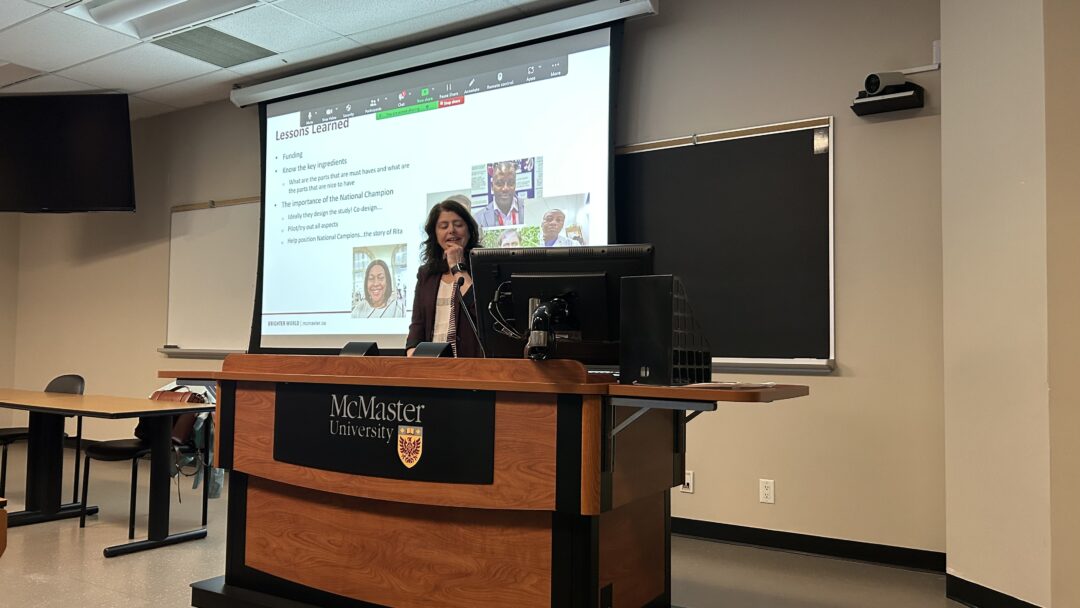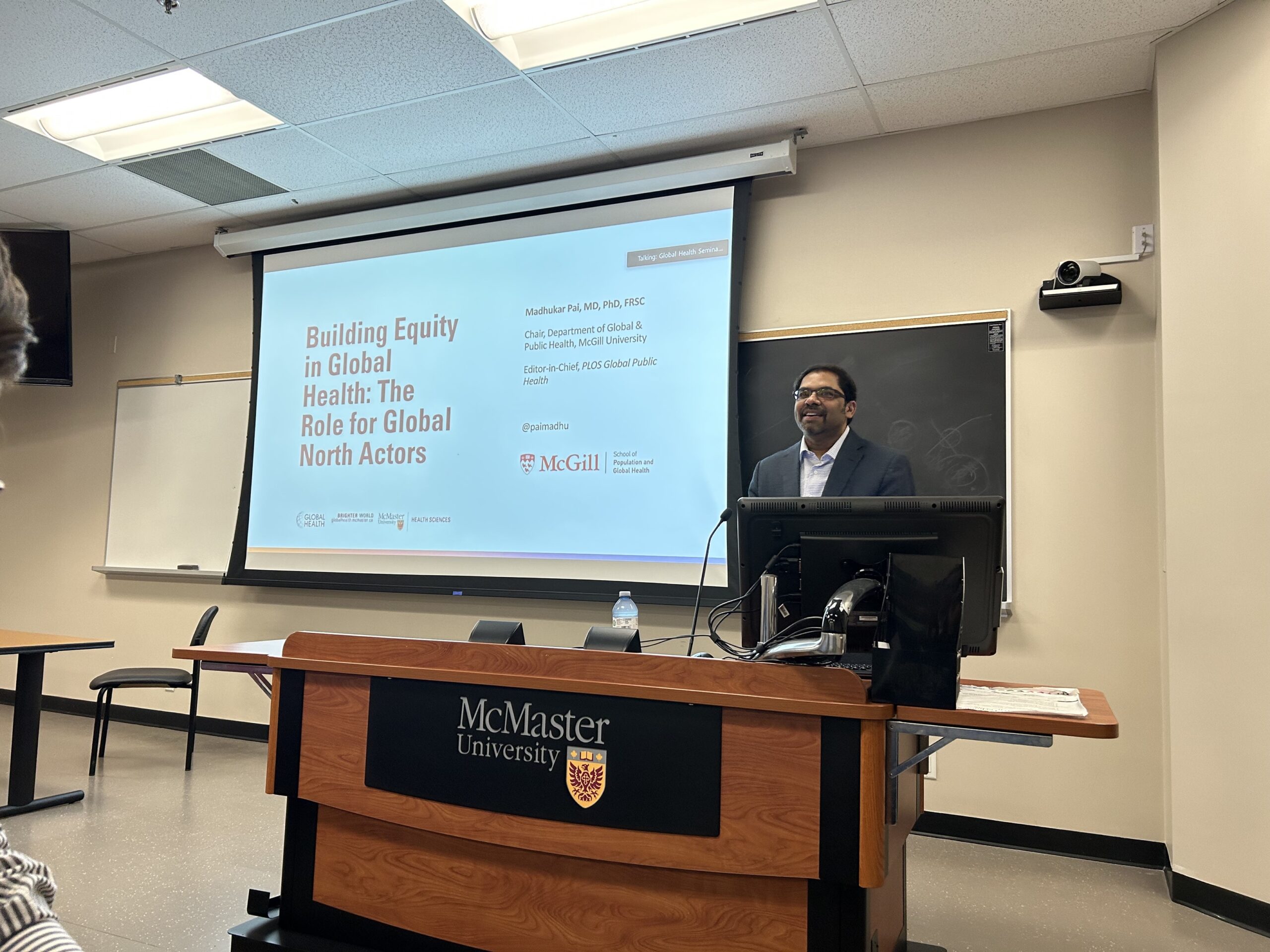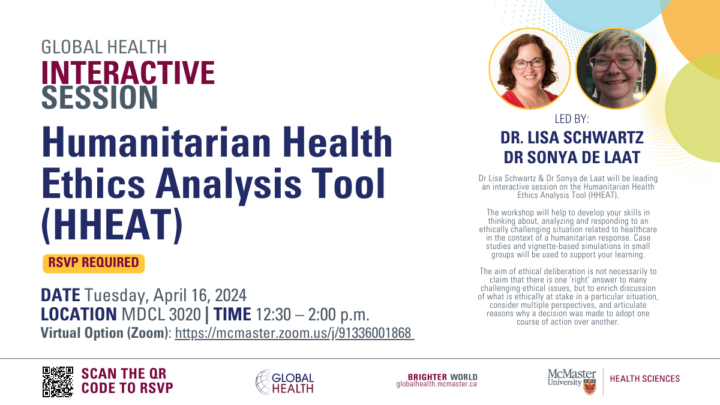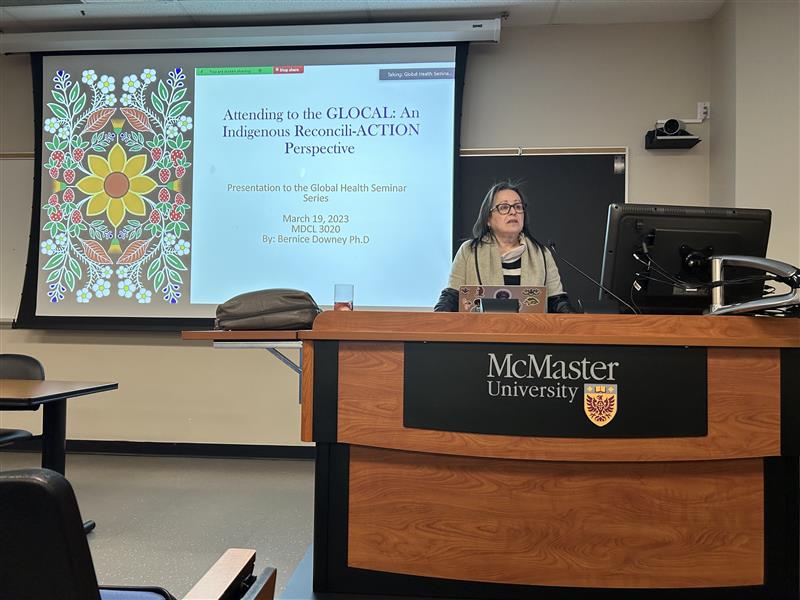Are we Facilitating Care or Prolonging Despair? What Researchers and Funders Should Consider When Investigating Stroke in Low-Resource Settings

Featured above is Dr. Jackie Bosch presenting at the April 2nd 2024 Global Health Seminar Series. The Blog below is written by Global Health Student Tipu Islam.
“Stroke is a leading cause of global death and disability–every paper starts like this” stated Jacqueline Bosch during the most recent installment of the Global Health Seminar Series. Bosch, an occupational therapist, and Assistant Dean at McMaster University asked attendees to consider beyond this common opening statistic by sharing what she wished she knew before Collaborating on Stroke Research in Low-Resource Settings. The talk began with an explanation of the major types of stroke care, highlighting that stroke management extends beyond healthcare facilities. She then shared her research and outlined the gaps in both healthcare resources and infrastructural capacity that make it difficult to improve stroke detection and treatment capacity in low-resource settings.
In low-resource settings, hospitals often provide stroke care in general wards due to the absence of specialized stroke units. As a point of care for multiple conditions, general wards do not have specialized mechanisms that can provide the most effective, tailored care for a patient who presents with a stroke. As Bosch explained, the establishment of organized stroke care divisions fill this gap by organizing multidisciplinary teams and implementing standardized operating procedures to deliver specialized treatment in both in-patient and community-based care.
In-patient stroke care occurs within the hospital and at four levels. Firstly, in general (non-specialized) wards—these are typically the first point of care before a patient is transferred to a specialized ward. Secondly, in organized stroke units, which have both the equipment and professional resources necessary to provide comprehensive care—these are often not available in low-resource settings. Thirdly, in mobile stroke teams based outside the hospital that provide rapid care to patients in remote areas. Lastly, in mixed rehabilitation wards which support the post-treatment recovery of patients with varying conditions. While in-patient rehabilitation is necessary, it is often insufficient in returning patients to their normal daily function. “Majority of… [a patient’s] time is spent in the community after they get out”, an environment that can differ greatly from case to case.
Community-based care is a means of supporting patients’ post-stroke transition into daily life and has three branches: occupational therapy, community-based rehabilitation, and long-term care planning. Occupational therapy involves helping patients regain independence in daily activities. Community-based rehabilitation is a holistic means of care that improves social integration after discharge. Long-term care planning addresses potential long-term dependencies and disabilities. Community-based care is important, since “we know the most effective intervention to reduce death and disability after stroke is post-unit care”. Noting the importance of stroke rehabilitation, Bosch raised that rehabilitation specialists’ jobs are often targeted during budget cuts—creating uncertainty around the sustainability of patient reintegration programs. In low-income settings, rehabilitation specialists are often scarce and underfunded.
Healthcare resources and infrastructural capacity limit the quality of care that patients receive in low-income settings. This led Bosch’s research team to question the sustainability of organized care mechanisms in these settings, and whether “we bring these to low-resource settings” to improve local infrastructure. Hence, the research team aimed to investigate if they could develop and implement key components of the stroke unit in low- and middle-income countries (LMIC)? through a step-wedged design originally conducted in 8 sites across 4 LMIC. As Bosch’s team progressed through their research, they were met with unique challenges. For instance, the lack of electricity in hospitals made CT scanning equipment useless and left patients vulnerable until they could be visually diagnosed by a nurse.
Bosch’s team also found that healthcare infrastructure in low-resource settings is severely limited, and “in most cases, there is no system of [stroke] care”. Most of these disparities stemmed from four areas: pressures to progress the study, technological adaptations, power differentials, and practitioner training. While working on her study, Bosch noted challenges in co-creation, particularly being pressured to progress the study without ensuring that materials such as case report forms were tailored for the community. “Even today, there is pressure to get going and going too fast without getting inputs”. To be representative of the community, “everything needs to be a consensus”, and should involve thorough revision that is grounded in ongoing consultation.
A particular challenge with co-creation is that “the world is moving online”, but not at the same pace. The effectiveness of industry-standard platforms such as Redcap is not guaranteed in low-resource settings due to the lack of nationwide electronic medical record (EMR) systems. People are not familiar with these electronic systems, and paper management of records is more costly and time-consuming. When attempting to implement EMR capacity within local hospitals, Bosch stated that “it didn’t work because it wasn’t adopted by the system”. Thus, technological adaptations are a barrier to implementing stroke monitoring in low-resource settings.
Power differentials can also limit the available scope and nature of what researchers can do, irrespective of proven effectiveness in other contexts. Bosch shared an experience where an official refused to allow the implementation of standardized operating procedures for stroke care, despite these having proven to improve care and reduce mortality. It is also difficult to employ full time equivalent healthcare professionals to support with recruitment efforts as they are already overwhelmed by understaffing in hospital settings. Referring to on-boarded healthcare providers, Bosch said, “I would hire them full-time moving forward”, but this was challenging given the constraints of budgeting.
Taken together, the implementation of organized stroke care is necessary to track and reduce the burden in low-resource settings. However, the ability for researchers and hospitals to pilot such systems of care is limited by resource availability and infrastructural capacity. Moving forward, grant reviewers and decision-makers must tailor funding criteria to the setting that research is conducted within. Stroke prevalence is grossly under-represented in low-income settings due to severe under-reporting. Allowing flexibility on timelines would give researchers, like Bosch, the time necessary to consult with communities and tailor research to unique contextual needs and characteristics. When it comes to navigating power differentials, every collaborative venture will have instances of disagreement. Future researchers must approach these instances with a co-creation mindset that is rooted in cultural awareness and humility. Thus, only by prioritizing collaborative and community-driven research approaches can we begin to truly understand the leading cause of death and disability, enabling the development of sustainable and effective strategies.
Student Blog


